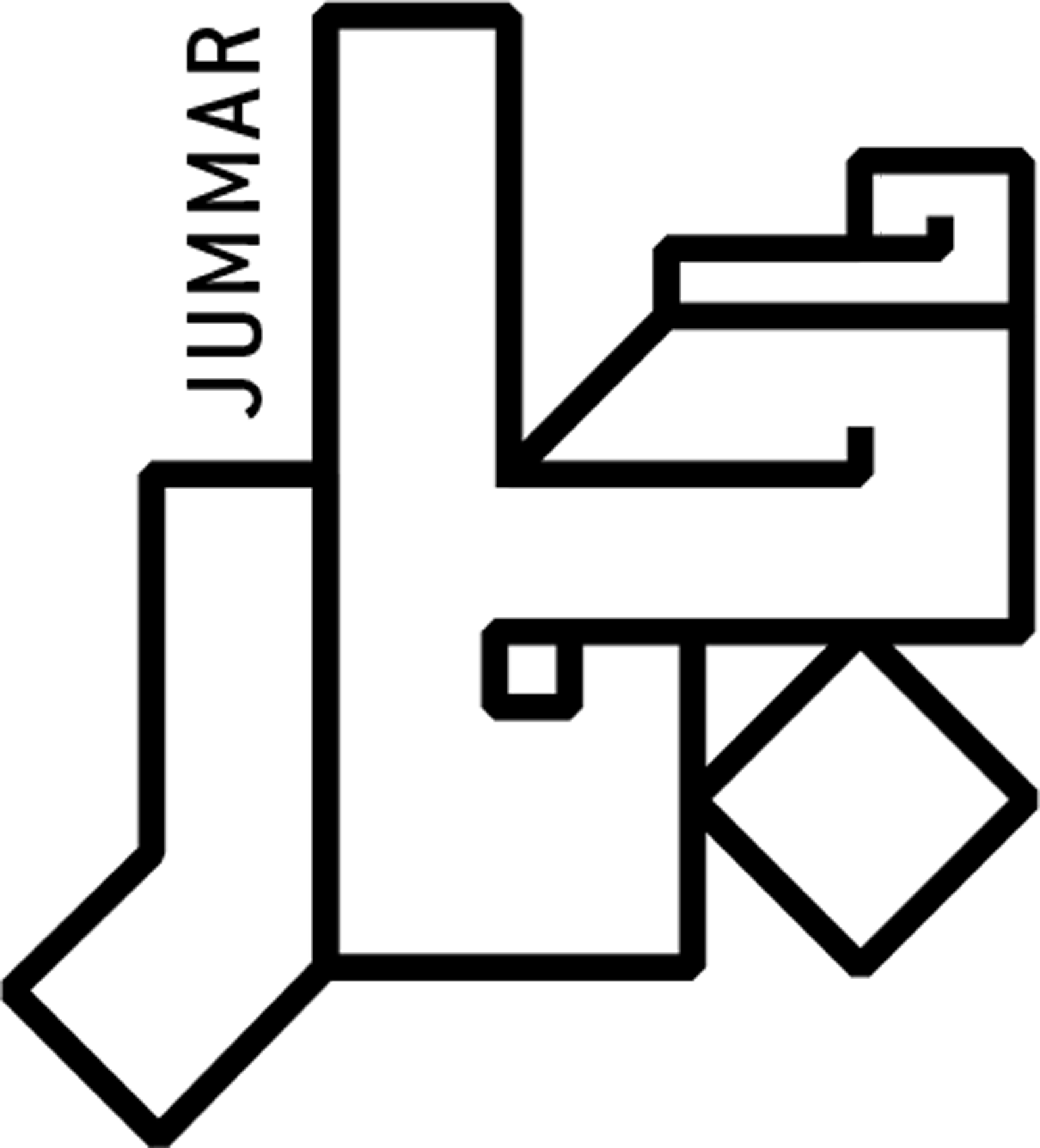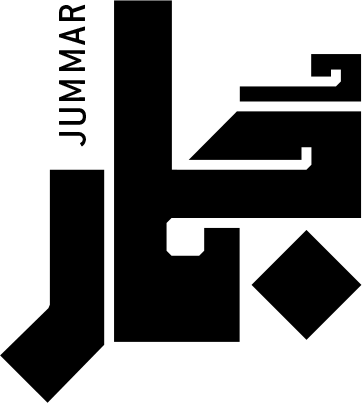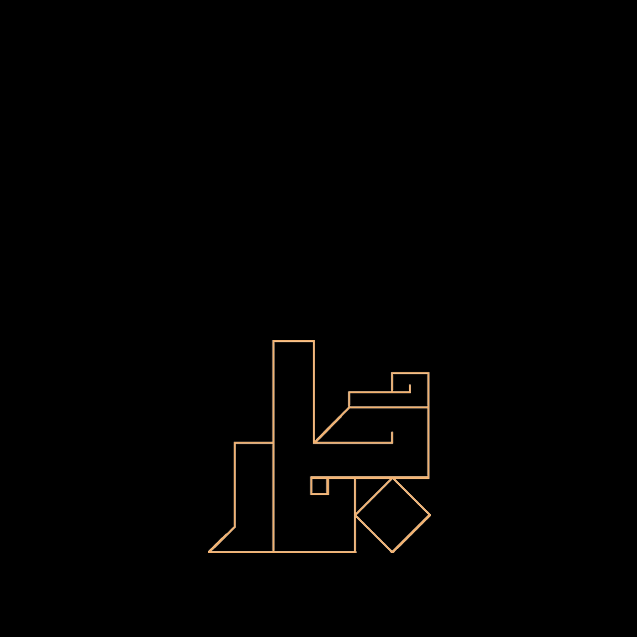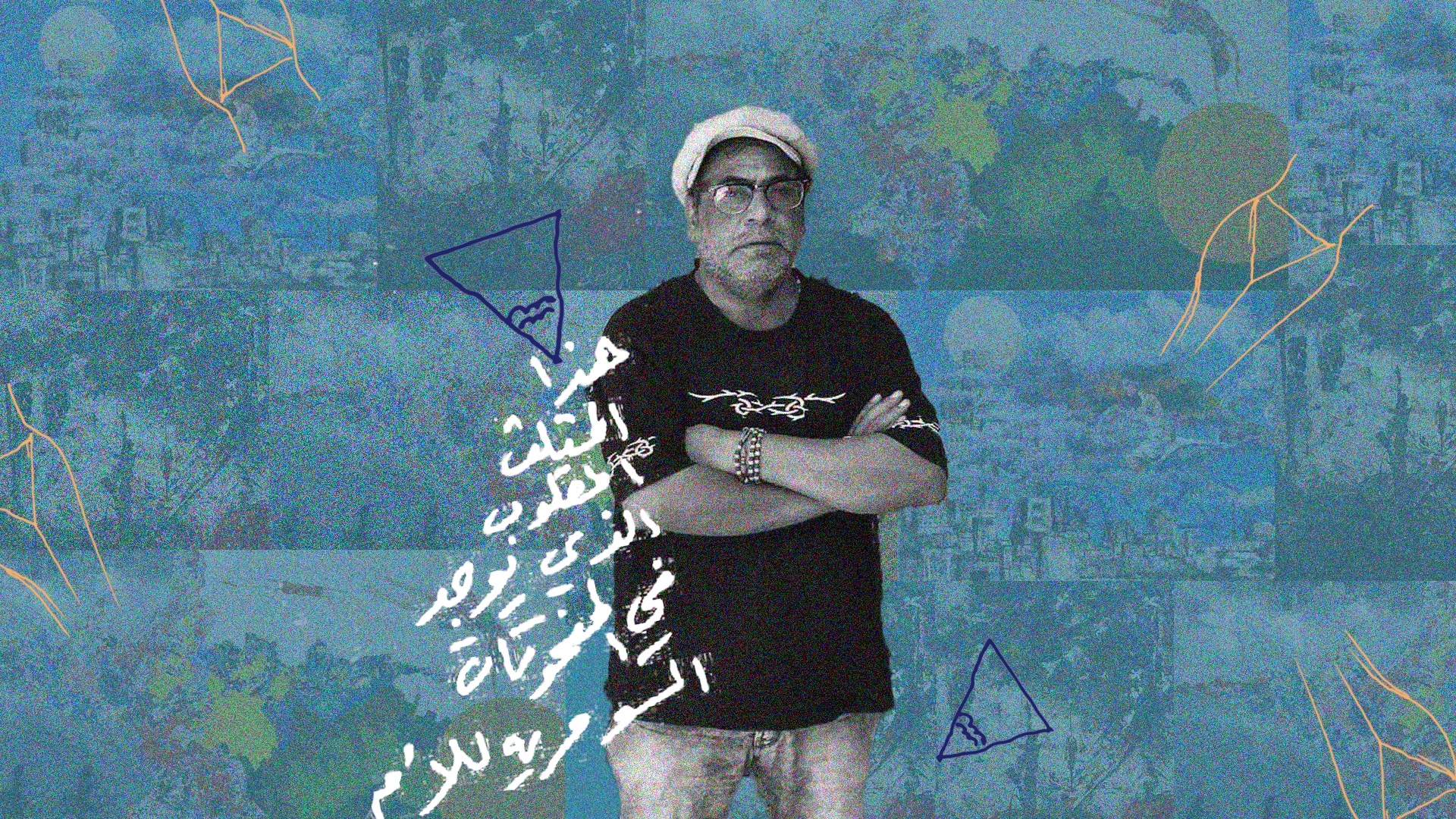Mohamed Maseer: How Can a Triangle Turn into a Bicycle?
22 Oct 2022
In this article, Mohamed Maseer explains the transformations, reflections, research and memories that led him to draw his new works.
Mohamed Maseer was born in Basra Governorate in 1963 and studied fine art at the College of Fine Arts in Baghdad under the supervision of a number of professors, led by Faiq Hassan, who were part of a transformative wave in Iraqi art. Unlike his peers, Maseer was always fastidious when preparing for his exhibitions. His first solo exhibition was held in Baghdad in 2004. In it, he dealt with the issue of mass graves during the regime of Saddam Hussein, who would bury his adversaries after mutilating their bodies. Since then, Maseer’s works have gone through many changes in subject matter and colour. He moved from the use of earthy colours to warm colours. The bicycle in the urban environment was a key emblem in his paintings.
I do not know when my obsession with the game of billiards began. I also do not know how this game, which in the main contains balls, attracted me to the shape of a triangle and its historical importance as well as its impact on me, my work, and life.
In the beginning when I would draw a large abstract picture, I would discover, once it was completed, that I had drawn a colored triangle in the middle of it. The triangle looked like the one we put on the billiard table to initially lock the balls in followed by hitting them hard to scatter them. I look at the triangle with its curved angles and stiff frame, as if I am seeing it for the first time in my life. Just like that, the triangle became involved, unconsciously, in my paintings.
The search for the triangle
After it became clear in my work, I began to search inside the triangle. I discovered a world without an end. Aside from the importance of the engineering of the triangle, my search for the triangle in the Sumerian civilization uncovered new and different concepts for me.
The triangle meant a lot to the Sumerians. They used it in pictorial writing, drawing the words to be written, or drawing part of them to depict them. More specifically: when they wanted to write the word woman, they would draw an inverted triangle. I discovered that the inverted triangle was taken from the shape of the woman’s torso.
As for the up-standing triangle, it meant force. I discovered that the idea of the six-pointed star – a Sumerian star – was taken from merging of the inverted triangle, woman, with the up-standing triangle, power or man. When the two triangles overlap, they produce the six-pointed star.
The triangle for the Sumerians meant the integration of the universe – that is, the collection of antigens – and the continuation of life. Of course, the opposites do not mean only the man and the woman, but all the opposites in the universe: light and dark, hot and cold, green and red. Thus life is complete and continues. The head of the fetus emerges from the point of the inverted triangle, woman. If we look at this even more deeply, the idea of the six-pointed star becomes the combination of opposites to create formation. The continuation of life is completed.
The triangle has been used in research for many years and I’ve produced numerous artworks on the concepts that have emerged from it.
Moving on to the bicycle
But what about the bicycle that became evident throughout my work? On a day during my childhood, a question stuck in my mind when I saw my father riding a bicycle, which became known as bicycle in the local dialect, on his way to work. Why a bicycle? How did my father not fall to the ground on a two-wheeled bike? I became obsessed with this weird machine. It touched me to the point that I would feel its parts when my father was resting it on the trunk of the palm tree in our house built of reeds in Al-Ashar area in the Basra governorate.
As I got older, I realized that the bicycle was also a triangle because it has two wheels, two sides, with is a hidden third side, the launch, movement, or speed. The bicycle became, at this point, a triangle in my head. Gradually, it became a major component of my work.
The bicycle is an integral aspect of our childhood life. It also has philosophical dimensions which can suggest that life that does not stop and is always turning like a bicycle wheel. When the wheel stops, we know that death has arrived. But the wheel in my work does not stop. The bicycle flies and it flies with women, with angels’ wings. This is how the world migrates into dreams. And there is a lot of Sufi thinking in this.
Read More
Mohamed Maseer was born in Basra Governorate in 1963 and studied fine art at the College of Fine Arts in Baghdad under the supervision of a number of professors, led by Faiq Hassan, who were part of a transformative wave in Iraqi art. Unlike his peers, Maseer was always fastidious when preparing for his exhibitions. His first solo exhibition was held in Baghdad in 2004. In it, he dealt with the issue of mass graves during the regime of Saddam Hussein, who would bury his adversaries after mutilating their bodies. Since then, Maseer’s works have gone through many changes in subject matter and colour. He moved from the use of earthy colours to warm colours. The bicycle in the urban environment was a key emblem in his paintings.
I do not know when my obsession with the game of billiards began. I also do not know how this game, which in the main contains balls, attracted me to the shape of a triangle and its historical importance as well as its impact on me, my work, and life.
In the beginning when I would draw a large abstract picture, I would discover, once it was completed, that I had drawn a colored triangle in the middle of it. The triangle looked like the one we put on the billiard table to initially lock the balls in followed by hitting them hard to scatter them. I look at the triangle with its curved angles and stiff frame, as if I am seeing it for the first time in my life. Just like that, the triangle became involved, unconsciously, in my paintings.
The search for the triangle
After it became clear in my work, I began to search inside the triangle. I discovered a world without an end. Aside from the importance of the engineering of the triangle, my search for the triangle in the Sumerian civilization uncovered new and different concepts for me.
The triangle meant a lot to the Sumerians. They used it in pictorial writing, drawing the words to be written, or drawing part of them to depict them. More specifically: when they wanted to write the word woman, they would draw an inverted triangle. I discovered that the inverted triangle was taken from the shape of the woman’s torso.
As for the up-standing triangle, it meant force. I discovered that the idea of the six-pointed star – a Sumerian star – was taken from merging of the inverted triangle, woman, with the up-standing triangle, power or man. When the two triangles overlap, they produce the six-pointed star.
The triangle for the Sumerians meant the integration of the universe – that is, the collection of antigens – and the continuation of life. Of course, the opposites do not mean only the man and the woman, but all the opposites in the universe: light and dark, hot and cold, green and red. Thus life is complete and continues. The head of the fetus emerges from the point of the inverted triangle, woman. If we look at this even more deeply, the idea of the six-pointed star becomes the combination of opposites to create formation. The continuation of life is completed.
The triangle has been used in research for many years and I’ve produced numerous artworks on the concepts that have emerged from it.
Moving on to the bicycle
But what about the bicycle that became evident throughout my work? On a day during my childhood, a question stuck in my mind when I saw my father riding a bicycle, which became known as bicycle in the local dialect, on his way to work. Why a bicycle? How did my father not fall to the ground on a two-wheeled bike? I became obsessed with this weird machine. It touched me to the point that I would feel its parts when my father was resting it on the trunk of the palm tree in our house built of reeds in Al-Ashar area in the Basra governorate.
As I got older, I realized that the bicycle was also a triangle because it has two wheels, two sides, with is a hidden third side, the launch, movement, or speed. The bicycle became, at this point, a triangle in my head. Gradually, it became a major component of my work.
The bicycle is an integral aspect of our childhood life. It also has philosophical dimensions which can suggest that life that does not stop and is always turning like a bicycle wheel. When the wheel stops, we know that death has arrived. But the wheel in my work does not stop. The bicycle flies and it flies with women, with angels’ wings. This is how the world migrates into dreams. And there is a lot of Sufi thinking in this.













